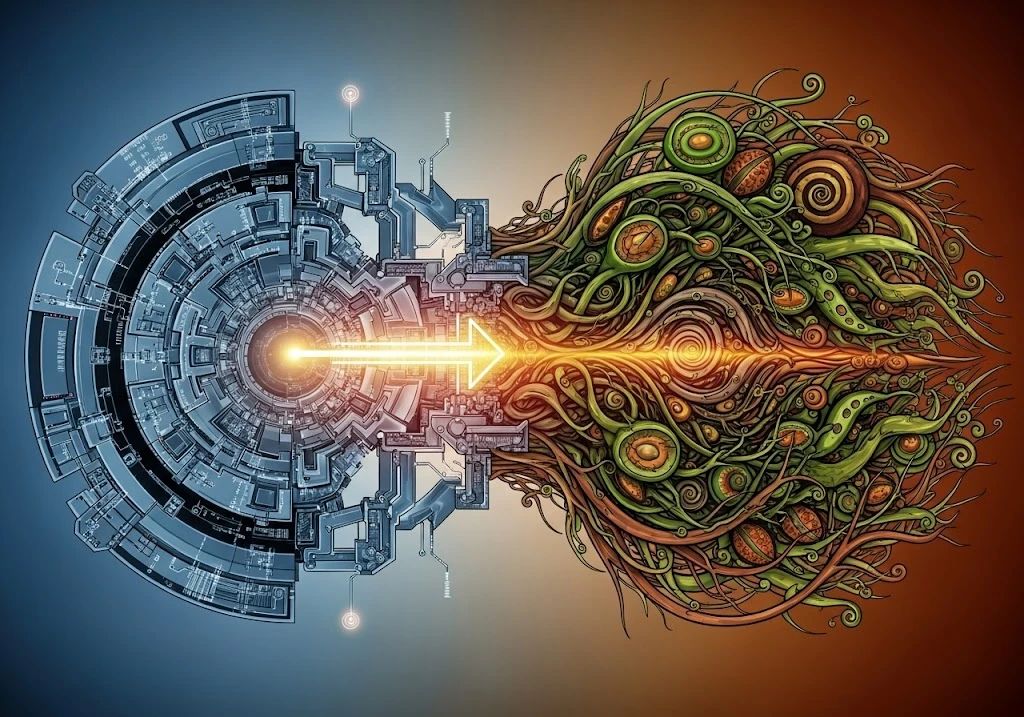
From the Turing machine to the oracle machine, from transfinite iteration to dissipative structures, this is a profound path through formal logic and real time.
The Turing machine is the foundational model of 20th-century computation theory; it delineates the boundary of the “computable.”
A Turing machine is a closed, deterministic system representing the reasoning limits of formal systems. It can only handle explicitly defined problems and derive results in a finite number of steps. However, a Turing machine cannot determine the truth value of all propositions within itself.
Gödel had already proven that any sufficiently complex formal system cannot simultaneously satisfy both consistency and completeness.
This reveals the first deep boundary.
To address problems undecidable within formal systems, Turing introduced the oracle machine. An oracle machine represents a “supersystem” perspective—it can judge problems that a Turing machine cannot decide, such as the Halting Problem.
This is not a programming trick, but a philosophical extension of computability theory: When a system cannot exhaust its own space of truths, it must appeal to an external “intuitive” judgment.
Is the oracle omnipotent? Turing delved deeper in his doctoral thesis: even oracles cannot solve all problems across all levels at once. Therefore, he proposed the concept of transfinite iteration—based on ordinal logic, higher-order systems are continuously constructed, each layer extending new axioms and judgment capacity upon the previous one.
This is a logical evolutionary structure, indicating that a system must approach higher completeness through its own evolution, rather than by a one-time construction.
In physics, Ilya Prigogine proposed the concept of dissipative structures: systems, under non-equilibrium conditions, generate new ordered structures by dissipating energy. A key feature of such structures is: time is irreversible.
They are not small disturbances to reversible physical processes, but “irreversible evolutions” based on historical paths and energy flows. This phenomenon deeply echoes Turing’s transfinite iteration on the logical level:
Both reject the stability of closed systems, and emphasize the generation of higher-order structures through historical accumulation and irreversible progression.
Traditional Byzantine fault-tolerant protocols (like BFT) pursue node consistency, but ignore time irreversibility. Their consensus mechanisms remain in the realm of “state consensus.”
But Bitcoin introduced the Proof-of-Work (PoW) mechanism, binding transaction finality to physical thermodynamic time, creating an irreversible chained history.
This design accomplishes a structural transformation:
Bitcoin’s chain-based consensus structure realizes, in engineering, both the evolutionary logic system and the irreversible time structure in theory.
Completeness and consistency cannot coexist—not as a paradox, but as a fundamental feature of natural logic.
Systems truly capable of dealing with complexity and uncertainty must embody irreversibility of time, and construct higher-order order through evolution.
Turing’s transfinite logic, Prigogine’s dissipative structures, and Bitcoin’s chain-evolution structure together outline a new landscape of computational philosophy:
Only dynamic, non-closed, time-evolving logical systems can approach the true nature of reality.
References: